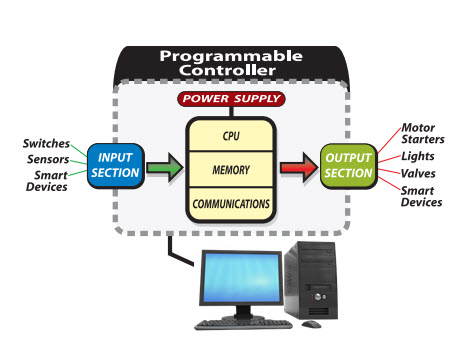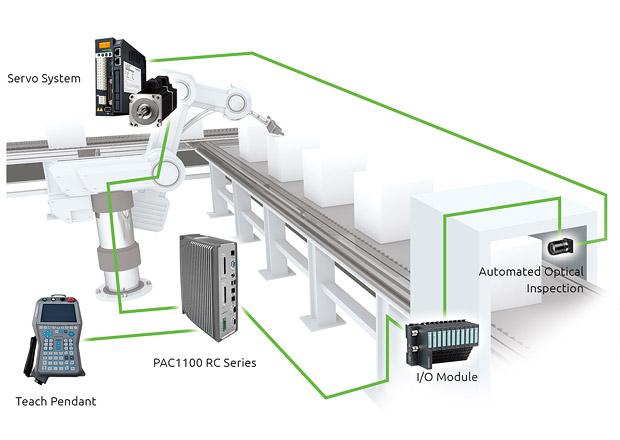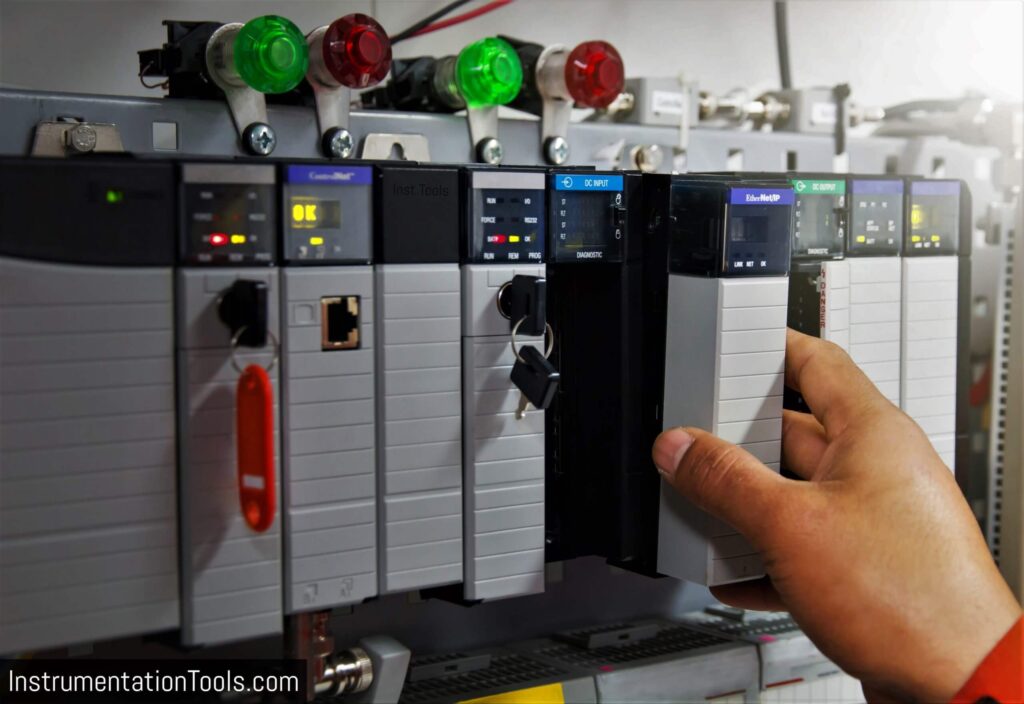Understanding Programmable Logic Controllers PLC
PLC Introduction:
PLC in industrial automation, Programmable Logic Controllers (PLCs) stand as the unsung heroes, orchestrating the intricate dance of machinery and processes. These robust and versatile devices serve as the nerve center, ensuring efficiency, reliability, and safety across a multitude of industries. This article delves into the essence of PLCs, exploring their functionalities, applications, and pivotal role in modern automation.
What is a PLC?
A PLC is a specialized computerized device designed to control industrial processes and machinery. Unlike general-purpose computers, PLCs are ruggedized for use in harsh industrial environments and are programmed to perform specific tasks. Originally developed to replace complex relay systems, PLCs have evolved into sophisticated controllers capable of handling a wide array of tasks, from simple logic operations to complex motion control.

Key Components of a PLC:
- CPU (Central Processing Unit): The brain of the PLC, responsible for executing control programs and coordinating communication between various components.
- Input Modules: These modules receive signals from sensors and switches, converting them into digital signals that the PLC can process.
- Output Modules: Conversely, output modules translate control signals from the PLC into actions, such as activating motors, valves, or alarms.
- Memory: PLCs contain memory for storing control programs, system parameters, and data logs.
- Programming Interface: PLCs are programmed using specialized software, which allows engineers to create, edit, and debug control logic.
Functionality and Programming: PLCs operate based on user-defined logic programmed into them. This logic, typically written in ladder logic, a graphical programming language resembling relay logic diagrams, dictates how the PLC responds to various inputs by controlling outputs. Other programming languages, such as Function Block Diagrams (FBD) and Structured Text (ST), are also supported by modern PLCs, offering flexibility and scalability in control system design.

Applications of PLCs:
The versatility of PLCs makes them indispensable across a wide spectrum of industries, including manufacturing, automotive, aerospace, pharmaceuticals, and energy. Some common applications include:
- Manufacturing Automation: PLCs govern assembly lines, robotics, and material handling systems, optimizing production efficiency and quality control.
- Process Control: In chemical plants, refineries, and water treatment facilities, PLCs regulate complex processes such as temperature, pressure, and flow control.
- Building Automation: PLCs manage HVAC (Heating, Ventilation, and Air Conditioning) systems, lighting, and security systems in commercial and residential buildings, enhancing energy efficiency and occupant comfort.
- Renewable Energy: PLCs play a crucial role in monitoring and controlling renewable energy systems such as solar arrays, wind turbines, and hydroelectric generators, maximizing energy output and grid integration.

Advantages of PLCs:
- Reliability: PLCs are designed for robustness, with hardened components capable of withstanding harsh industrial environments.
- Flexibility: PLC programming allows for easy modification and expansion of control logic, facilitating system upgrades and adaptation to changing requirements.
- Diagnostics: PLCs provide extensive diagnostic capabilities, enabling rapid fault detection and troubleshooting, minimizing downtime.
- Integration: PLCs can communicate with other automation systems, enterprise software, and IoT devices, enabling seamless integration within larger control networks.
Challenges and Future Trends:
While PLCs offer numerous benefits, they also face challenges such as cybersecurity threats, interoperability issues, and the need for continuous skills development among personnel. Looking ahead, advancements in technology, such as edge computing, artificial intelligence, and cloud integration, are poised to reshape the landscape of industrial automation, driving further innovation in PLCs and enhancing their capabilities.
Conclusion:
Programmable Logic Controllers serve as the cornerstone of industrial automation, empowering businesses to achieve greater efficiency, reliability, and competitiveness. As technology continues to evolve, so too will the capabilities of PLCs, ensuring they remain indispensable tools in the ever-changing landscape of modern manufacturing and process industries. Understanding the essence of PLCs is not just a matter of technical knowledge but a recognition of their pivotal role in shaping the world we live in.


Pingback: The New Guide On The Troubleshooting Common Siemens PLC Issues - technoenvio.com